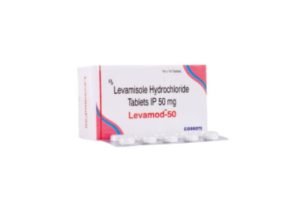
Ofloxacin is a fluoroquinolone antibiotic used to treat a variety of bacterial infections. Here’s a detailed overview:
Description
Ofloxacin is a synthetic broad-spectrum antibiotic effective against a wide range of Gram-negative and Gram-positive bacteria. It works by inhibiting bacterial DNA gyrase and topoisomerase IV, enzymes critical for bacterial DNA replication and repair.
Brand Names
- Floxin
- Ocuflox (ophthalmic solution)
- Oculox (ophthalmic solution)
- Oflocet
- Ofloxacin (generic)
Available Forms & Strengths
- Tablets: 200 mg, 400 mg
- Eye Drops (ophthalmic solution): 0.3%
- Ear Drops (otic solution): 0.3%
- Injection: Not commonly used or available
Uses
- Urinary Tract Infections (UTIs)
- Respiratory Tract Infections (e.g., bronchitis, pneumonia)
- Skin Infections
- Prostatitis
- Sexually Transmitted Infections (e.g., gonorrhea)
- Ocular Infections (e.g., conjunctivitis, corneal ulcers)
Side Effects
- Nausea
- Diarrhea
- Dizziness
- Headache
- Insomnia
- Rash
Dose
- Tablets: Typically 200 mg to 400 mg twice daily, depending on the infection and severity.
- Eye Drops: 1-2 drops in the affected eye(s) 2-4 times daily.
- Ear Drops: 4-5 drops in the affected ear(s) twice daily.
Contraindications
- Allergy to ofloxacin or other fluoroquinolones
- Children (except for certain conditions like cystic fibrosis)
- Pregnancy (use only if benefits outweigh risks)
- Severe hepatic impairment (liver disease)
Warnings
- Tendon Damage: Risk of tendonitis or tendon rupture, especially in older adults and those on corticosteroids.
- QT Prolongation: Caution in patients with a history of arrhythmias.
- Central Nervous System Effects: May cause seizures, tremors, or hallucinations.
- Photosensitivity: Increased risk of sunburn.
- Drug Interactions: Can interact with anticoagulants, antidiabetic drugs, and other medications.
Always consult a healthcare provider for personal medical advice and proper dosage instructions.







